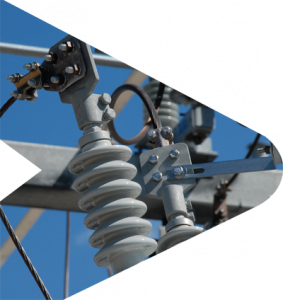Regional planning
 Regional and economic planning initiatives provide economic benefits, pave way for future grid
Regional and economic planning initiatives provide economic benefits, pave way for future grid
While electric reliability has been and always will be the top priority for transmission owners and operators, the interconnected grid has begun to serve other significant energy-related needs. Regional and economic planning increasingly focuses on strategic, purposeful projects that provide local and regional economic and market benefits as well as those that address other factors in play: carbon-reduction initiatives, renewable generation, regulatory changes and aging power plants.
FERC Order 1000
ATC is a participant in stakeholder discussions about MISO’s compliance with the Federal Energy Regulatory Commission’s Order 1000. Issued in 2011, Order 1000 requires MISO and other regional transmission organizations and transmission providers to plan for public policy requirements such as renewable portfolio standards and EPA regulations. The order requires every RTO to have cost-allocation methodologies for regional and inter‑regional projects. The order also removes a right of first refusal, allowing parties other than incumbent utilities to construct certain transmission projects that provide broad benefits, with the costs shared regionally. Much of the stakeholder discussion has centered on which types of projects will be eligible for construction by other developers and how the developers will be selected for those projects. Plans for complying with the order’s regional requirements are due in October 2012. The order also requires MISO to coordinate its planning with PJM and other neighboring RTOs and transmission providers, as well as develop cost‑allocation methodologies with each neighbor for inter-regional projects. Proposed inter‑regional compliance plans for MISO and each neighboring region are due to FERC in April 2013.
Eastern Interconnection Planning Collaborative
A group of 26 Planning Authorities is in Phase Two of a multi-year effort to develop transmission expansion scenarios for the Eastern Interconnection. ATC has received funding from the Department of Energy and is actively participating in the collaborative.
In Phase One, the collaborative developed eight energy policy future scenarios and analyzed the generation additions and deactivations, as well as the transmission interchanges between regions associated with those scenarios. Three scenarios were selected for more detailed study in Phase Two. The possible transmission development options in Phase Two scenarios will be analyzed using North American Electric Reliability Corp. reliability criteria and traditional transmission planning tools. The scenarios also will undergo production-cost analysis. Both alternating current and direct current lines are being considered. More information on this effort can be found at www.eipconline.com.
MISO Transmission Expansion Planning
ATC participates in MISO planning studies that address long-term, short-term and targeted issues and needs. The long-term studies are primarily value-based economic studies looking into a 10- to 20-year horizon. These studies use different future scenarios agreed upon by the MISO stakeholders and measure the economic savings from proposed transmission projects. Short-term planning examines a five- to 10-year horizon and is primarily driven by transmission owners’ reliability needs and compliance with NERC reliability standards.
MTEP12
Our strategic projects staff is participating in this current short-term planning review by contributing project information, helping build and review planning models, and correlating the needs identified in the MISO analyses with specific ATC projects.
Other MISO planning activities
We participate in MISO’s Planning Subcommittee and Western Technical Studies Task Force, as well as in the Planning Advisory Committee to the MISO Board of Directors. We also participate in or observe other MISO planning activities that involve generation and interconnection studies.
Northern Area Study
MISO launched a Northern Area Study in June 2012 to address a number of transmission proposals and issues in Manitoba, North Dakota, South Dakota, Minnesota, Wisconsin and Michigan. The drivers for the study include:
-
potential addition of generation and imports from Manitoba Hydro,
-
potential generation retirements driven by EPA regulations,
-
multiple transmission lines proposed by a number of transmission owners,
-
potential load growth in Michigan’s Upper Peninsula, northern Wisconsin and North Dakota, and
-
a need to improve system reliability in the study area.
The analysis aims to identify the economic opportunity for transmission development, develop proposals to address regional needs, calculate the costs and benefits, and identify the most valuable proposal or proposals for further consideration.
Market constraints
Two of the three narrowly constrained areas within the MISO footprint are in our service area. While congestion has declined in these areas of Wisconsin and Upper Michigan – in part due to the completion of the Paddock-Rockdale 345‑kV line and generation additions – congestion remains during more than 500 hours each year. We continue to work actively within the MISO planning process to identify and resolve the underlying constraints on our system and to provide better access to the wholesale energy market.
